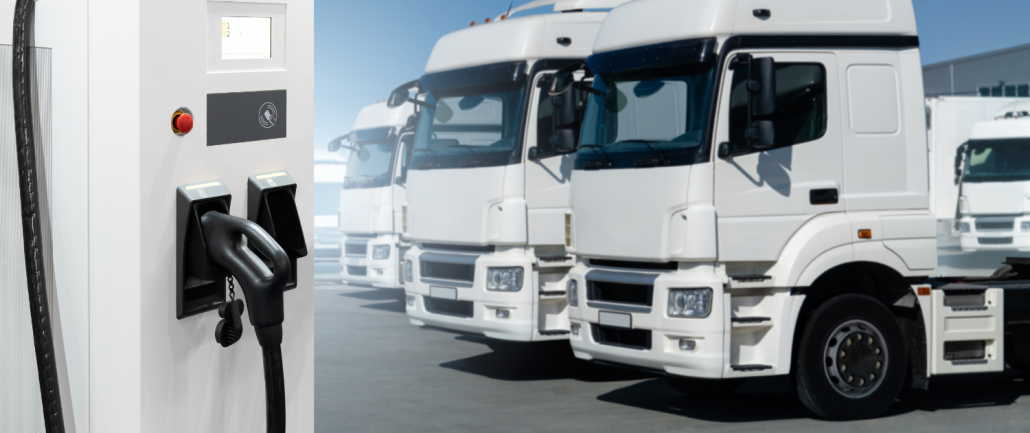
Deciding which modern technologies are actually worth the initial investment can be difficult.
As any fleet manager knows, trucking conferences, industry experts, and rising entrepreneurs are always promoting the newest technologies designed to save your fleet money and time.
While some technological advancements have the potential to become industry standards, others remain beneficial only to certain carriers and may not justify the cost for every fleet. Keep reading to find out which modern innovations could provide a significant return on investment to your fleet by analyzing their practical benefits, compatibility with existing operations, and long-term value.
Six Technologies Worth Considering for Your Fleet
Route Optimization Software
Reducing unnecessary mileage to save on fuel costs and minimize wear and tear on vehicles is one of the top goals of every motor carrier. Optimized routes not only save carriers money on fuel and repairs, they also improve delivery times and lead to lower emissions, contributing to greener operations.
Route optimization software works by using algorithms to determine the most efficient routes, considering traffic, seasonal conditions, and predictive analytics to plan routes and offer real-time updates and ETAs.
Most route optimization software can integrate with GPS devices, telematics systems, and transportation management systems (TMS). They also often offer APIs for seamless integration with existing fleet management tools.
Telematics Systems
Although sometimes debated for their monitoring of driver behavior, telematics systems provide real-time tracking of vehicles, allowing for better fleet management and quicker response to issues.
By monitoring behavior such as speeding, harsh braking, idling, and more, these systems provide feedback to improve safety and lower operational costs. Telematics can also alert fleet managers to maintenance needs before they become critical, reducing downtime and repair costs.
Telematics systems typically connect via the vehicle’s onboard diagnostics (OBDII) or CAN-BUS port. Additionally, they can integrate with ELDs, route optimization software, and TMS.
Electronic Logging Devices (ELDs)
Although paper logbooks have been an industry staple for as long as drivers have needed to comply with the FMCSA’s Hours of Service regulations, electronic logging devices have quickly become the best option to cut down on paperwork and save drivers time.
In fact, ELDs, which monitor location, engine hours, vehicle movement, and miles driven, are now required for any drivers who previously maintain records of duty status (RODS). Some drivers remain exempt, but the benefits of ELDs are likely to sway any concerns regarding the initial investment.
ELDs quickly and accurately provide data on driving hours, which can be used to optimize scheduling and improve efficiency. They also are compatible with any truck, able to connect to the vehicle’s engine to record driving time and integrate with telematics systems and TMS for comprehensive fleet management.
Advanced Driver Assistance Systems (ADAS)
Features like automatic emergency braking, forward collision warning, and lane departure warnings make advanced driver assistance systems an essential modern technology in maintaining safe driving practices and preventing accidents.
Vehicles equipped with ADAS also may qualify for lower insurance premiums due to their enhanced safety features and ability to significantly reduce accidents. When a dangerous situation arises, ADAS can react in just tenths of a second, while a driver, on average, can take between 1 to 2 seconds to respond to it.
ADAS can be integrated into new vehicles or added as aftermarket solutions. Additionally, they work alongside telematics systems and can be part of autonomous vehicle technologies.
Transportation Management Systems (TMS)
While many of these technologies predominantly assist in the efficiency and safety of truck drivers, transportation management systems work to streamline the daily requirements of fleet managers and carriers.
TMS is software designed to plan, execute, and monitor the movement of goods from origin to destination. It manages route planning, shipment tracking, carrier management, and paperwork, ensuring smooth logistics operations by coordinating shipping modes, warehouse management, and freight billing.
By providing real-time visibility and streamlining processes, TMS enhances supply chain efficiency, enabling companies to achieve better control and cost savings while improving customer satisfaction.
Electric Vehicles (EVs)
One of the most talked about innovations of the past two decades, electric vehicles have continued to grow in popularity and ability in recent years. Although incorporating EVs into a fleet comes with the highest upfront cost of any technology on this list, the benefits can easily justify this investment depending on the carrier.
Studies have shown that an average electric vehicle owner can save up to $1,000 each year on fuel costs, not to mention the potential government tax incentives and breaks as environmental legislation continues to pass nationwide.
EVs are also often touted as a safer option, as they are usually equipped with the most up-to-date safety features including ADAS and telematics. Beyond the cost, the most challenging downside of EVs remains the lack of charging infrastructure, especially in rural areas.
What technologies have changed your fleet? Which ones were not worth the investment? Connect with us on social media today and let us know what you think about the newest innovations in the trucking industry.




